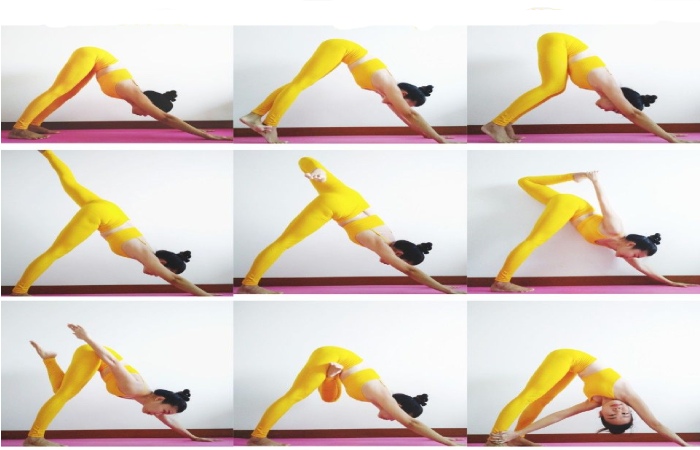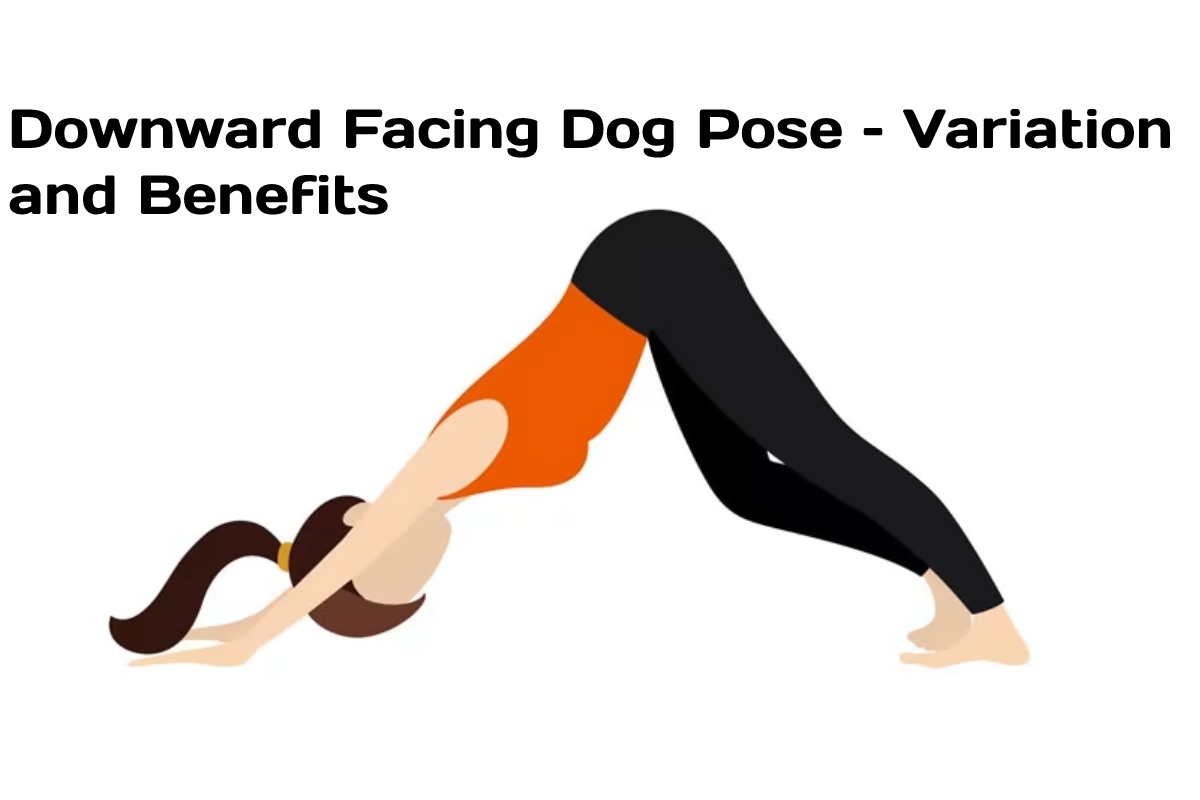Downward Facing Dog Pose, or ‘ Adho Mukha savasana in Sanskrit, is one of those asanas that should include when practising yoga. Not only because of its benefits, which are many, but also because it is one of the simplest. It is, in fact, one of the movements performed in the ‘ Salutation to the sun ‘. For example, this pose increases blood supply to the brain, helps stabilise blood pressure, and combats stress and anxiety.
In addition, it stretches the entire spine, which, in its regular practice, helps to relax the back and avoid lumbar and cervical pain. It also strengthens the arms and legs and relieves tension in the shoulders, neck and arms.
Table of Contents
How to do Downward Facing Dog Pose?
- Stand on four supports, on your hands and knees.
- Bring your hands slightly past shoulder height, open them wide, and plant your toes on the floor.
- Pushing your hands towards the ground, raise your pelvis and take your weight back so that you can stretch your arms and back, pointing your buttocks up. The head is relaxed, following the line of the spine.
- Gradually and according to your flexibility, you can extend your legs, directing your heels towards the ground, even if they don’t touch. If the back extension is lost when opening the legs, performing the variant with the knees bent is better.
- Hold the pose for five breaths and come out of the carriage by bringing your knees to the ground. You can get into Balasana or Child’s pose to rest.
Variation to Perform Downward Facing Dog Pose
Although it seems like a simple asana to perform, it must be ‘assembled’ correctly to notice the benefits and not hurt ourselves.
You can start in a quadruped position: knees and hands on the ground. Inspire.
Exhale and raise your hips as if someone were trying to pull on your pants. Stretch well using the muscles of the arms.
Breathe in and place your hands on the ground. They have to be very active, with their fingers apart. Exhale and make sure your heels touch the ground. If this is not possible, you can slightly bend your knees or raise your heels. But remember that the bottom of your foot should be firmly on the ground with practice.
Stay in the pose for around 30 seconds, breathing deeply. Let your head rest and release the base of the neck.
To ‘take apart’ this asana, you can either bend your knees, push up on your heels, and slowly drop into Child’s Pose or gently raise your head.

· Adho mukha svanasana’ with bent legs
The downward dog posture is also performe with your legs bent. It is, in fact, the most recommended posture for beginners since it helps to work on the flexibility of the legs without bending the spine.
· Downward Facing Dog Pose Exercising Feet and Knees
Another way to increase flexibility while performing this asana is by performing a gentle knee flexion and extension exercise.
· ‘Adho mukha svanasana eka pada’
It is one of the downward dog variants practised by people with a more advanced level since it consists of standing on one leg while the opposite one rises and remains fixed upwards while taking several breaths.
The pose can further intensify by bending the knee inward for a more excellent hip opening.
· ‘Adho mukha svanasana eka pada’ with hands on ankle
Starting from the previous position, adho mukha svanasana Eka pada, you can add more difficulty by raising the opposite arm, as if the leg and arm formed a straight line. If this asana is very complex for you, secure your feet on the floor and reach the hand towards the leg or ankle.
Downward Facing Dog Pose Benefits
- Strengthens the strengths of the back, abdomen and legs.
- Strengthens ankles and wrists.
- Stretches, hamstrings and calves.
- It stimulates the nervous system.
- Reduces fatigue and provides energy.
- It releases the lower back and gives light to the legs.
- It improves neck and shoulder pain by providing flexibility.
- Good alternative or preparation of inverted postures.
- Improves blood circulation.
- It tones the reproductive organs, relieves menstrual pain and recommends during menopause.
On an emotional level, inverted or semi-inverted postures such as Adho mukha svanasana bring us great benefit by experiencing ourselves from a different angle than usual, with the head below the heart. Change of perspective invites us to see things from another point of view, to observe ourselves and the world with another prism, so that what could be a problem takes on greater amplitude in our field of perception and can be relativised. We can see it differently.
Conclusion
The practice of this type of asana helps us free ourselves from conditioning and harmful habits of thought, opening our minds to a more positive attitude about life.
Also Read: Top 10 Fitness Subscription Boxes

